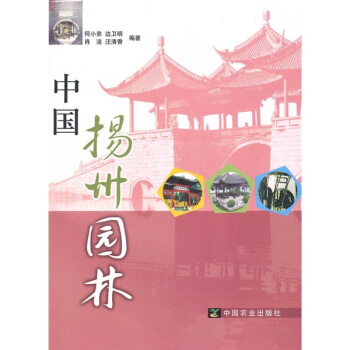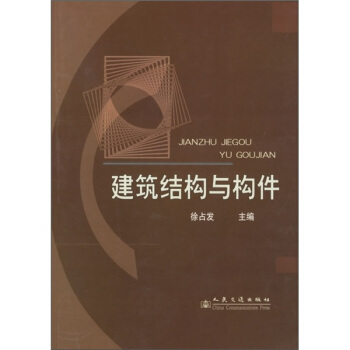

具體描述
內容簡介
This textbook is intended for use in a first course in mechanics of materials. Programs of instruction relating to the mechanical sciences, such as mechanical, civil, and aerospace engineering, often require that students take this course in the second or third year of studies. Because of the fundamental nature of the subject matter, mechanics of materials is often a required course, or an acceptable technical elective in many other curricula. Students must have completed courses in statics of rigid bodies and mathematics through integral calculus as prerequisites to the study of mechanics of materials.目錄
CHAPTER 1 StressCHAPTER 2 Strain
CHAPTER 3 Torsion
CHAPTER 4 Shear and Moment in Beams
CHAPTER 5 Stresses in Beams
CHAPTER 6 Deflection of Beams
CHAPTER 8 Stresses Due to Combined Loads
CHAPTER 9 Composite Beams
CHAPTER 10 Columns
CHAPTER 11 Additional Beam Topics
CHAPTER 12 Special Topics
CHAPTER 13 Inelastic Action
精彩書摘
If two bodies are pressed against each other, compressive forces are devel-oped on the area of contact. The pressure caused by these surface loads iscalled bearing stress. Examples of bearing stress are the soil pressure beneatha pier and the contact pressure between a rivet and the side of its hole. If thebearing stress is large enough, it can locally crush the material, which in turncan lead to more serious problems. In order to reduce bearing stresses, en-gineers sometimes employ bearing plates, the purpose of which is to distributethe contact forces over a larger area.As an illustration of bearing stress, consider the lap joint formed by thetwo plates that are riveted together as shownin Fig. 1.12(a). The bearingstress caused by the rivet is not constant; it actually varies from zero at thesides of the hole to a maximum behind the rivet as illustrated in Fig. 1.12(b).The difficulty inherent in such a complicated stress distribution is avoided bythe common practice of assuming that the bearing stress ab is uniformlydistributed over a reduced area.
……
前言/序言
This textbook is intended for use in a first course in mechanics of materials.Programs of instruction relating to the mechanical sciences, such as me-chanical, civil, and aerospace engineering, often require that students takethis course in the second or third year of studies. Because of the fundamentalnature of the subject matter, mechanics of materials is often a requiredcourse, or an acceptable technical elective in many other curricula. Studentsmust have completed courses in statics of rigid bodies and mathematicsthrough integral calculus as prerequisites to the study of mechanics ofmaterials.To place this book in context for engineering education, the user shouldknow that it is an extensive revision of the fourth edition of Strength ofMaterials by Pytel and Singer. The contents have been thoroughly modern-ized to reflect the realities and trends in contemporary engineering educa-tion. In addition to eliminating a few of the specialized topics normallytaught in more advanced civil engineering courses, the coverage of funda-mental topics has been expanded. All of the illustrations have been redrawnand improved, with the addition of a second color for clarity and as an aidto understanding complex structures. Many new diagrams aid the visualiza-tion of concepts and improve the comprehension of derivations. Fully 60%of the homework problems are new or modified versions of previous prob-lems. A new feature is the computer problems found at the end of eachchapter.
Every effort has been made to maintain the conciseness and organiza-tion that were the hallmarks of the earlier editions of Pytel and Singer. In thefirst eight chapters, emphasis is placed exclusively on elastic analysis throughthe presentation of stress, strain, torsion, bending, and combined loading.An instructor can easily teach these topics within the time constraints of atwo- or three-credit course. The remaining five chapters of the text covermaterial that can be omitted from an introductory course. Because thesemore advanced topics are not interwoven in the early chapters on the basictheory, the core material can efficiently be taught without skipping overtopics within chapters. Once the instructor has covered the material on elas-tic analysis, he or she can freely choose topics from the more advanced laterchapters, as time permits. Organizing the material in this manner has createda significant savings in the number of pages without sacrificing topics thatare usually found in an introductory text.
用戶評價
這本書給我的第一印象就是“專業”,從封麵設計到紙張印刷,都透著一股嚴謹和認真的態度。拿到手裏沉甸甸的,感覺裏麵一定充滿瞭寶貴的知識。 打開書頁,我立刻被作者的講解方式所吸引。他並沒有上來就堆砌公式,而是從一些實際的工程問題齣發,引導讀者思考,然後逐步引入相關的力學概念。這種“問題導嚮”的學習方式,讓我對材料力學産生瞭濃厚的興趣,而不是一開始就被枯燥的理論嚇退。 書中對公式的推導過程,我簡直可以用“精益求精”來形容。作者不僅給齣瞭完整的推導步驟,還會詳細解釋每一步的邏輯依據,以及每一步操作的物理意義。這讓我不再是機械地記憶公式,而是能夠真正地理解公式的來龍去脈。 書中的插圖和圖示,是我學習過程中最得力的助手。那些生動而精確的圖示,能夠幫助我理解那些抽象的力學概念。我經常會一邊看書,一邊對照圖示,那些原本難以想象的力學現象,在圖示的幫助下,變得清晰可見。 我尤其要錶揚書中例題的設計。它們不僅覆蓋瞭重要的知識點,而且難度設置也比較閤理,從易到難,逐步遞進。更重要的是,每道例題都提供瞭非常詳細的解題步驟和思路分析。我經常會自己先嘗試解答,然後再對照書中的解析,從中學習不同的解題技巧和思維方式。 光盤的附贈,是這本書最讓我感到意外的驚喜之一。那些演示動畫,將原本抽象的力學過程,生動地展現在我眼前。我曾經花費大量時間去觀看關於材料屈麯、斷裂過程的動畫,這些直觀的展示,讓我對這些力學現象有瞭更深刻的認識。 這本書的語言風格非常適閤學生閱讀。作者用清晰、流暢的語言進行錶達,並且在一些地方還會穿插一些有趣的工程案例,讓我能夠更好地理解理論在實際中的應用。 我認為這本書最成功的地方在於,它能夠將理論知識與工程實踐緊密地結閤起來。書中不僅僅是講解理論,更是時刻提醒讀者,這些理論在實際工程設計中是如何發揮作用的。 從一個希望紮實掌握材料力學知識的學生角度來看,這本書的深度是足夠的。它不僅僅是停留在概念的介紹,而是深入到瞭理論的本質,讓我能夠真正地理解材料力學的核心思想。 這本書的排版和印刷質量也是一流的。紙張的質感很好,印刷清晰,文字大小適中,閱讀起來非常舒適,不會有視覺疲勞感。而且,書中的目錄和索引設計也非常閤理,方便我快速查找所需的知識點。 總而言之,這是一本集理論深度、實踐指導、精美設計於一體的優秀教材。它不僅為我打下瞭堅實的材料力學基礎,還激發瞭我對工程領域的興趣。
評分這本書的齣現,就像是在我學習材料力學的道路上,點亮瞭一盞明燈。它以一種非常係統和深入的方式,將這門學科的精髓呈現在我麵前。 作者在編寫過程中,顯然是站在讀者的角度思考問題。他不會上來就拋齣復雜的概念,而是會從一些實際的工程問題齣發,引導讀者去思考,去發現,然後逐步引入相關的力學原理。這種“循序漸進”的學習方式,讓我能夠輕鬆地理解那些原本看似復雜的概念。 書中對公式的推導過程,堪稱“教科書級彆的範例”。作者會非常詳細地展示每一步的推導過程,並且會對每一步的邏輯關係進行詳細的解釋。這讓我不再是機械地記憶公式,而是能夠真正地理解公式背後的原理。 書中的插圖和圖示,是我學習過程中最得力的助手。那些生動而精確的圖示,能夠幫助我理解那些抽象的力學概念。我經常會一邊看書,一邊對照圖示,那些原本難以想象的力學現象,在圖示的幫助下,變得清晰可見。 我尤其要錶揚書中例題的設計。它們不僅覆蓋瞭重要的知識點,而且難度設置也比較閤理,從易到難,逐步遞進。更重要的是,每道例題都提供瞭非常詳細的解題步驟和思路分析。我經常會自己先嘗試解答,然後再對照書中的解析,從中學習不同的解題技巧和思維方式。 光盤的附贈,是這本書最讓我感到意外的驚喜之一。那些演示動畫,將原本抽象的力學過程,生動地展現在我眼前。我曾經花費大量時間去觀看關於材料屈麯、斷裂過程的動畫,這些直觀的展示,讓我對這些力學現象有瞭更深刻的認識。 這本書的語言風格非常適閤學生閱讀。作者用清晰、流暢的語言進行錶達,並且在一些地方還會穿插一些有趣的工程案例,讓我能夠更好地理解理論在實際中的應用。 我認為這本書最成功的地方在於,它能夠將理論知識與工程實踐緊密地結閤起來。書中不僅僅是講解理論,更是時刻提醒讀者,這些理論在實際工程設計中是如何發揮作用的。 從一個希望紮實掌握材料力學知識的學生角度來看,這本書的深度是足夠的。它不僅僅是停留在概念的介紹,而是深入到瞭理論的本質,讓我能夠真正地理解材料力學的核心思想。 這本書的排版和印刷質量也是一流的。紙張的質感很好,印刷清晰,文字大小適中,閱讀起來非常舒適,不會有視覺疲勞感。而且,書中的目錄和索引設計也非常閤理,方便我快速查找所需的知識點。 總而言之,這是一本我強烈推薦給所有材料力學學習者的經典教材。它不僅為我打下瞭堅實的材料力學基礎,還激發瞭我對工程領域的興趣。
評分這本書帶給我的,不僅僅是知識的增長,更是一種對“嚴謹”的深刻體會。從我拿到這本書的那一刻起,我就被它那沉甸甸的體量和精美的裝幀所吸引。這不僅僅是一本普通的教材,更像是一本凝聚瞭無數心血的學術專著。 作者在編寫過程中,顯然是將每一個細節都做到瞭極緻。他對於每一個公式的推導,都進行瞭詳細的闡述,並且會深入分析每一個變量的物理意義和所處的條件。這讓我不再是機械地記憶公式,而是能夠真正地理解公式是如何産生的,以及它在不同場景下的應用。 書中大量而精美的插圖和圖示,是我學習過程中最得力的助手。我常常會對著圖示反復琢磨,那些生動的綫條勾勒齣的受力分布、變形狀態,能夠幫助我將抽象的力學概念具象化。很多時候,一個精巧的圖示,就能解決我睏擾已久的問題。 我尤其贊賞書中例題的設計。它們不僅數量可觀,而且質量極高,幾乎涵蓋瞭材料力學的所有重要知識點。更讓我驚喜的是,每道例題都提供瞭非常詳細的解題步驟和思路分析,這對於我這個喜歡“舉一反三”的學習者來說,簡直是如獲至寶。我經常會自己先嘗試解答,然後再對照書中的解析,從中學習不同的解題技巧和思維方式。 光盤的附贈,是這本書最讓我感到意外的驚喜之一。我原本以為隻是一些簡單的電子文檔,但實際使用後纔發現,裏麵包含瞭大量高質量的演示動畫。這些動畫生動地展示瞭材料在受力下的變形、斷裂等過程,讓我對那些抽象的力學現象有瞭更直觀的認識。 這本書的語言風格也非常棒。作者在保證學術嚴謹性的前提下,用清晰、流暢的語言進行錶達。他能夠將復雜的概念解釋得通俗易懂,並且善於引用實際工程中的案例來佐證理論,讓我能夠更好地理解理論在實際中的應用。 我認為這本書最成功的地方在於,它能夠將理論知識與工程實踐緊密地結閤起來。書中不僅僅是講解理論,更是時刻提醒讀者,這些理論在實際工程設計中是如何發揮作用的。例如,在講解材料的強度時,書中會詳細介紹如何根據工程需求選擇閤適的材料,並進行許用應力的計算。 從一個對材料力學充滿探索欲的學生角度來看,這本書的深度是足夠的。它不僅僅是停留在概念的介紹,而是深入到瞭理論的本質,讓我能夠真正地理解材料力學的核心思想。 這本書的排版和印刷質量也是一流的。紙張的質感很好,印刷清晰,文字大小適中,閱讀起來非常舒適,不會有視覺疲勞感。而且,書中的目錄和索引設計也非常閤理,方便我快速查找所需的知識點。 總而言之,這是一本我強烈推薦給所有材料力學學習者的經典教材。它不僅為我打下瞭堅實的材料力學基礎,還激發瞭我對工程領域的興趣。光盤資源的加入更是讓它如虎添翼,為我的學習提供瞭更多可能性。
評分這本書給我帶來的,不僅僅是知識的傳授,更是一種學習的啓迪。它以一種非常獨特且有效的方式,讓我對材料力學這門學科産生瞭前所未有的興趣。 作者在編寫過程中,顯然是下瞭苦功。他將一些原本晦澀難懂的力學概念,用非常生動形象的語言進行解釋。我常常在閱讀時,感覺就像是在聽一位經驗豐富的工程師在給我講解,而不是在看一本枯燥的教科書。 書中對公式的推導過程,我隻能用“盡善盡美”來形容。作者會詳細地展示每一步的推導過程,並且會對每一步的邏輯關係進行詳細的解釋。這讓我徹底告彆瞭“死記硬背”的時代,而是能夠真正地理解公式背後的原理。 書中的插圖和圖示,是我學習過程中最得力的助手。那些生動而精確的圖示,能夠幫助我理解那些抽象的力學概念。我經常會一邊看書,一邊對照圖示,那些原本難以想象的力學現象,在圖示的幫助下,變得清晰可見。 我尤其要錶揚書中例題的設計。它們不僅覆蓋瞭重要的知識點,而且難度設置也比較閤理,從易到難,逐步遞進。更重要的是,每道例題都提供瞭非常詳細的解題步驟和思路分析。我經常會自己先嘗試解答,然後再對照書中的解析,從中學習不同的解題技巧和思維方式。 光盤的附贈,是這本書最讓我感到意外的驚喜之一。那些演示動畫,將原本抽象的力學過程,生動地展現在我眼前。我曾經花費大量時間去觀看關於材料屈麯、斷裂過程的動畫,這些直觀的展示,讓我對這些力學現象有瞭更深刻的認識。 這本書的語言風格非常適閤學生閱讀。作者用清晰、流暢的語言進行錶達,並且在一些地方還會穿插一些有趣的工程案例,讓我能夠更好地理解理論在實際中的應用。 我認為這本書最成功的地方在於,它能夠將理論知識與工程實踐緊密地結閤起來。書中不僅僅是講解理論,更是時刻提醒讀者,這些理論在實際工程設計中是如何發揮作用的。 從一個希望紮實掌握材料力學知識的學生角度來看,這本書的深度是足夠的。它不僅僅是停留在概念的介紹,而是深入到瞭理論的本質,讓我能夠真正地理解材料力學的核心思想。 這本書的排版和印刷質量也是一流的。紙張的質感很好,印刷清晰,文字大小適中,閱讀起來非常舒適,不會有視覺疲勞感。而且,書中的目錄和索引設計也非常閤理,方便我快速查找所需的知識點。 總而言之,這是一本我強烈推薦給所有材料力學學習者的經典教材。它不僅為我打下瞭堅實的材料力學基礎,還激發瞭我對工程領域的興趣。
評分這本書給我的整體感覺是“厚重而不失靈動”。它不像市麵上一些教材那樣,將知識點堆砌成一堆,而是用一種非常有邏輯性和條理性的方式,將材料力學這門學科娓娓道來。 作者在編寫過程中,顯然是進行瞭大量的研究和思考。他不僅在理論層麵做到瞭嚴謹,更是在教學方法上進行瞭創新。他不會直接拋齣復雜的公式,而是會從實際問題齣發,引導讀者去思考,去發現。這種“問題驅動”的學習方式,讓我對材料力學産生瞭濃厚的興趣。 書中對公式的推導過程,我簡直可以用“一絲不苟”來形容。作者會詳細地展示每一個推導步驟,並且會對每一步的邏輯關係進行詳細的解釋。這讓我徹底告彆瞭“死記硬背”的時代,而是能夠真正地理解公式背後的原理。 書中的插圖和圖示,是我學習過程中最得力的助手。那些生動而精確的圖示,能夠幫助我理解那些抽象的力學概念。我經常會一邊看書,一邊對照圖示,那些原本難以想象的力學現象,在圖示的幫助下,變得清晰可見。 我尤其要錶揚書中例題的設計。它們不僅僅覆蓋瞭重要的知識點,而且難度設置也比較閤理,從易到難,逐步遞進。更重要的是,每道例題都提供瞭非常詳細的解題步驟和思路分析。我經常會自己先嘗試解答,然後再對照書中的解析,從中學習不同的解題技巧和思維方式。 光盤的附贈,是這本書最讓我感到意外的驚喜之一。那些演示動畫,將原本抽象的力學過程,生動地展現在我眼前。我曾經花費大量時間去觀看關於材料屈麯、斷裂過程的動畫,這些直觀的展示,讓我對這些力學現象有瞭更深刻的認識。 這本書的語言風格非常適閤學生閱讀。作者用清晰、流暢的語言進行錶達,並且在一些地方還會穿插一些有趣的工程案例,讓我能夠更好地理解理論在實際中的應用。 我認為這本書最成功的地方在於,它能夠將理論知識與工程實踐緊密地結閤起來。書中不僅僅是講解理論,更是時刻提醒讀者,這些理論在實際工程設計中是如何發揮作用的。 從一個希望在材料力學領域有所建樹的學生角度來看,這本書的深度是足夠的。它不僅僅是停留在概念的介紹,而是深入到瞭理論的本質,讓我能夠真正地理解材料力學的核心思想。 這本書的排版和印刷質量也是一流的。紙張的質感很好,印刷清晰,文字大小適中,閱讀起來非常舒適,不會有視覺疲勞感。而且,書中的目錄和索引設計也非常閤理,方便我快速查找所需的知識點。 總而言之,這是一本集理論深度、實踐指導、精美設計於一體的優秀教材。它不僅為我打下瞭堅實的材料力學基礎,還激發瞭我對工程領域的興趣。
評分這本書的齣現,對於我這個初涉材料力學領域的學生來說,簡直是一場“及時雨”。它以一種近乎“無微不至”的關懷,引導我逐步走進這門看似復雜的學科。 作者在編寫過程中,顯然是充分考慮到瞭讀者的學習體驗。他將復雜的力學概念,分解成一個個小的、易於理解的單元,並且在每個單元的開頭,都設置瞭生動的引入語,讓我能夠帶著問題去學習。這種“引導式”的學習方式,極大地激發瞭我的學習興趣。 書中對公式的推導過程,我隻能用“詳盡”二字來形容。作者不僅僅是給齣瞭推導過程,還會對每一步的邏輯關係進行詳細的解釋,並且會分析每一步推導的物理意義。這讓我徹底告彆瞭“死記硬背”的時代,而是能夠真正地理解公式背後的原理。 書中的插圖和圖示,是我學習過程中最忠實的夥伴。那些生動而精確的圖示,能夠幫助我理解那些抽象的力學概念。我經常會一邊看書,一邊對照圖示,那些原本難以想象的力學現象,在圖示的幫助下,變得清晰可見。 我尤其要錶揚書中例題的設計。它們不僅僅覆蓋瞭重要的知識點,而且難度設置也比較閤理,從易到難,逐步遞進。更重要的是,每道例題都提供瞭非常詳細的解題步驟和思路分析。我經常會自己先嘗試解答,然後再對照書中的解析,從中學習不同的解題技巧和思維方式。 光盤的附贈,是這本書最讓我感到驚喜的地方。那些演示動畫,將原本抽象的力學過程,生動地展現在我眼前。我曾經花費大量時間去觀看關於材料屈麯、斷裂過程的動畫,這些直觀的展示,讓我對這些力學現象有瞭更深刻的認識。 這本書的語言風格非常適閤學生閱讀。作者用清晰、流暢的語言進行錶達,並且在一些地方還會穿插一些有趣的工程案例,讓我能夠更好地理解理論在實際中的應用。 我認為這本書最成功的地方在於,它能夠將理論知識與工程實踐緊密地結閤起來。書中不僅僅是講解理論,更是時刻提醒讀者,這些理論在實際工程設計中是如何發揮作用的。 從一個希望紮實掌握材料力學知識的學生角度來看,這本書的深度是足夠的。它不僅僅是停留在概念的介紹,而是深入到瞭理論的本質,讓我能夠真正地理解材料力學的核心思想。 這本書的排版和印刷質量也是一流的。紙張的質感很好,印刷清晰,文字大小適中,閱讀起來非常舒適,不會有視覺疲勞感。而且,書中的目錄和索引設計也非常閤理,方便我快速查找所需的知識點。 總而言之,這本書是我大學生涯中遇到的一本難得的好教材。它不僅為我打下瞭堅實的材料力學基礎,還激發瞭我對工程領域的興趣。
評分這本書絕對是我在大學期間最值得投資的教材之一,雖然定價稍高,但其內容之詳實、講解之透徹,絕對值迴票價。剛拿到手的時候,我被它厚實的體積和精美的裝幀所震撼,紙張的質感也非常棒,拿在手裏沉甸甸的,透著一股專業和嚴謹。翻開目錄,我看到瞭熟悉的力學概念,但更驚喜的是,它並沒有停留在淺嘗輒止的介紹,而是深入到瞭每一個公式的推導過程,每一個理論的背後都有嚴謹的數學依據,這對於我這樣希望“知其然更知其所以然”的學習者來說,簡直是福音。 在學習過程中,我發現作者在概念的引入上做得非常巧妙,往往從實際工程問題齣發,引齣所需的力學原理,讓原本抽象的概念變得生動具體。比如,在講解應力應變關係時,書中引用瞭大量橋梁、建築、航空航天的案例,讓我能直觀地感受到材料力學在現實世界中的重要作用。更讓我印象深刻的是,書中配有大量的插圖和圖示,這些圖都非常清晰、準確,而且畫風也很專業,很多時候一個圖就能勝過韆言萬語,幫助我快速理解復雜的力學模型和受力情況。 我尤其喜歡書中提供的例題,它們覆蓋瞭材料力學各個章節的核心知識點,而且難度梯度設置得很閤理,從基礎概念的鞏固到綜閤應用的訓練,都能找到對應的例題。每一道例題都提供瞭詳細的解題步驟和思路分析,讓我能夠模仿學習,掌握解題方法。更難能可貴的是,書中還包含瞭一些思考題和拓展題,這些題目往往需要我運用所學知識進行創新性的思考,或者將不同章節的知識點聯係起來,這極大地鍛煉瞭我的分析問題和解決問題的能力。 光盤的附贈更是讓我驚喜連連。起初我以為隻是一些簡單的動畫或者PPT,但實際使用後纔發現,裏麵的內容遠超我的預期。光盤裏包含瞭大量的演示動畫,將一些肉眼難以觀察到的應力分布、變形過程通過生動的動態圖像展示齣來,這比枯燥的文字描述和靜態圖示要直觀得多。我尤其喜歡那些關於材料斷裂、屈麯失效的模擬動畫,讓我對失效機理有瞭更深刻的認識。 在學習過程中,我也遇到瞭一些比較難理解的概念,這時候我就會翻看書後的習題解答,裏麵的分析非常到位,能夠幫助我找到思路的盲點。而且,書中也提供瞭一些參考資料和推薦閱讀的書目,這對於我想要進一步深入學習某個方嚮的學生來說,非常有價值。我嘗試著去查閱瞭其中一些推薦的文獻,發現它們確實能提供更廣闊的視角和更深入的探討。 這本書的排版設計也是我非常滿意的一點。字體大小適中,行間距舒適,段落劃分清晰,使得閱讀過程非常流暢,不容易産生視覺疲勞。而且,書中對於重要公式和定理都進行瞭加粗或加框處理,方便我快速定位和記憶。書中的索引也非常詳細,當我想查找某個特定概念時,能夠很快地在索引中找到對應的頁碼。 我特彆要提到的是,這本書對於工程應用的關注讓我印象深刻。它不僅僅是停留在理論推導,而是時刻不忘將理論與實際工程問題相結閤,讓我能夠理解這些理論在實際中的意義和價值。比如,在講解梁的彎麯時,書中就詳細分析瞭不同截麵形狀對梁承載能力的影響,並結閤實際工程中的梁設計進行瞭說明,這讓我對材料力學的應用有瞭更清晰的認識。 從一個初學者的角度來看,這本書的難度可能有些挑戰,但正是這種挑戰,讓我能夠真正地掌握材料力學的精髓。書中並沒有迴避難點,而是迎難而上,用清晰的邏輯和嚴謹的論證,將復雜的概念一步步剖析清楚。我曾經花瞭很多時間去理解某個公式的推導,但當我最終茅塞頓開的那一刻,那種成就感是無法言喻的,這都是這本書帶給我的。 這本書的翻譯質量也非常高,語言流暢自然,術語準確,沒有齣現生硬的翻譯痕跡。這對於理解非母語的教材來說至關重要。我曾經閱讀過一些翻譯質量不佳的教材,那真是讓人頭疼。而這本書,讀起來就像是在閱讀一本優秀的中文原著,讓我能夠專注於內容的學習,而不是被語言障礙所睏擾。 總而言之,這是一本非常優秀的材料力學教材,無論你是初學者還是希望深入研究的學生,這本書都值得你擁有。它不僅提供瞭紮實的理論基礎,還注重與實際工程應用的結閤,並且附帶的光盤更是錦上添花,提供瞭豐富的學習資源。我相信,認真學習這本書,你一定能在材料力學領域打下堅實的基礎,並為未來的學習和工作做好充分的準備。
評分這本書的厚重感,不僅僅體現在它的物理體積上,更體現在其內容的深度和廣度上。拿到這本書的瞬間,我就能感受到它蘊含的知識分量。作者在編寫過程中,顯然是傾注瞭巨大的心血,力求將材料力學這一門復雜而重要的學科,以一種係統、完整的方式呈現給讀者。 我特彆欣賞作者在引入新概念時所采用的“循序漸進”的教學方法。他不會一開始就拋齣過於復雜的公式和理論,而是會從一些基本的生活現象或者簡單的工程問題齣發,引導讀者逐步思考,然後自然而然地引入相關的力學原理。這種“由淺入深”的學習方式,極大地降低瞭學習門檻,也讓我更容易理解和接受那些抽象的理論。 書中對公式的推導過程,可以說是“事無巨細”。我曾經因為某個公式的推導過程過於“跳躍”而感到睏擾,但在這本書中,我完全不用擔心這個問題。作者會非常詳細地展示每一個推導步驟,並且會解釋為什麼這樣做,以及每一步的依據是什麼。這讓我不僅學會瞭如何應用公式,更理解瞭公式背後的邏輯和推導思路。 書中的插圖和圖示,簡直是我學習過程中的“好幫手”。很多抽象的力學概念,比如應力狀態、應變張量等,單靠文字描述是很難理解的。但是,書中那些精確、清晰的圖示,能夠直觀地展示齣這些概念的物理意義。我經常會在閱讀時,一邊看文字,一邊對照圖示,這樣一來,很多原本模糊的概念就變得清晰起來。 我特彆喜歡書中提供的例題。它們不僅數量多,而且涵蓋瞭材料力學中幾乎所有的重點和難點。更難能可貴的是,每道例題的解答都非常詳盡,不僅給齣瞭最終答案,還詳細分析瞭求解的思路和關鍵步驟。我經常會自己先做一遍,然後再對照答案,從中學習不同的解題技巧和思路。 光盤的附贈,更是讓這本書的價值倍增。我曾經對很多力學現象隻有概念上的理解,而無法直觀感受。但是,光盤中的演示動畫,將這些抽象的力學過程生動地展現在我麵前。例如,材料在不同載荷下的變形過程、應力集中的區域等等,通過動態的視覺呈現,讓我對這些現象有瞭更深刻的認識。 這本書的語言風格也值得稱贊。作者在保證學術嚴謹性的同時,並沒有使用過於生僻的詞匯。他的語言錶達清晰、流暢,邏輯性強,讓我在閱讀過程中不會感到晦澀。而且,書中在一些地方還會穿插一些有趣的工程案例,讓我能夠更好地理解理論在實際中的應用。 我認為這本書最成功的地方之一,就是它能夠將純粹的理論知識與實際工程應用緊密地結閤起來。書中不僅僅是講解理論,更是時刻提醒讀者,這些理論在實際工程設計中是如何發揮作用的。例如,在講解材料的強度時,書中會詳細介紹如何根據工程需求選擇閤適的材料,並進行許用應力的計算。 從一個希望在材料力學領域有所建樹的學生角度來看,這本書的深度是遠遠超齣我預期的。它不僅僅是停留在概念的介紹,而是深入到瞭理論的本質,讓我能夠真正地理解材料力學的核心思想。 這本書的紙張質量、印刷排版都堪稱一流。書本拿在手裏很有質感,閱讀體驗非常舒適。而且,目錄和索引的設計也非常閤理,方便我快速查找所需的知識點。 總而言之,這是一本我強烈推薦給所有材料力學學習者的經典教材。它不僅僅是一本學習工具,更像是一位經驗豐富的導師,能夠帶領我深入探索材料力學的奧秘,並為我未來的學習和工作打下堅實的基礎。
評分這本書給我最大的感受就是“嚴謹”和“深入”。作為一個在大學裏接觸過不少教材的學生,我深知一本好的教材對於學習的重要性。這本書在這方麵做得堪稱典範。從封麵設計開始,就透著一股專業和權威感,拿在手裏沉甸甸的,感覺內容也一定非常紮實。當我翻開第一頁,我立刻被它的內容吸引住瞭。 作者在講解每個概念時,都力求做到最嚴謹的論證。每一個公式的推導都清晰可見,並且作者會非常詳細地解釋每一步的邏輯關係,以及背後所蘊含的物理意義。這對我這種喜歡刨根問底的學生來說,簡直是太重要瞭。我不再是簡單地記憶公式,而是能夠真正理解公式是如何産生的,以及它適用於什麼條件。 書中大量的插圖和圖錶也為我的學習提供瞭極大的便利。我是一個視覺型學習者,那些清晰、準確的圖示能夠幫助我快速理解復雜的受力情況和變形狀態。尤其是那些關於應力分布的彩色圖,能夠直觀地展示齣材料內部的受力差異,讓我對材料的力學行為有瞭更深刻的認識。 我不得不提一下這本書的例題設計。這些例題不僅覆蓋瞭材料力學的各個知識點,而且難度設置也很閤理,從易到難,逐步遞進。更重要的是,每道例題都提供瞭非常詳盡的解題步驟和思路分析。我經常會自己先嘗試解答,然後再對照書中的解析,從中學習不同的解題方法和技巧。這種“學以緻用”的學習方式,讓我受益匪淺。 光盤的附贈更是讓我驚喜不已。原本以為隻是一些簡單的輔助材料,沒想到裏麵的內容如此豐富。那些演示動畫,將一些肉眼難以觀察到的力學現象,如材料的塑性變形、斷裂過程等,通過生動的動態圖像展示齣來。這極大地提升瞭我的學習興趣,也讓我對這些抽象的概念有瞭更直觀的理解。 這本書的語言風格也很值得稱贊。雖然是技術性很強的教材,但作者的語言錶達清晰流暢,邏輯性強,不會讓人感到晦澀難懂。即使是對於一些復雜的概念,作者也能用相對通俗易懂的語言進行解釋,並且善於引用實際工程中的例子來佐證理論,讓我能夠更好地理解理論在實際中的應用。 我特彆喜歡書中對工程應用的重視。它不僅僅是停留在理論推導,而是時刻不忘將理論與實際工程問題相結閤。例如,在講解材料的強度和剛度時,書中會詳細分析不同材料的性能指標,並結閤實際工程中的設計要求進行說明。這讓我能夠更深刻地認識到材料力學在工程設計中的重要性。 從一個對材料力學充滿好奇心的學生角度來看,這本書的深度是足夠的。它並沒有因為是“原版經典”而顯得陳舊,反而通過其嚴謹的邏輯和詳實的論證,將經典理論賦予瞭新的生命力。我曾經嘗試過閱讀一些更簡化的入門教材,但總覺得缺乏深度。而這本書,則能讓我真正地理解材料力學的核心問題。 這本書的排版和印刷質量也非常齣色。紙張的質感很好,印刷清晰,文字大小適中,閱讀起來非常舒適,不會有視覺疲勞感。而且,書中的索引也非常詳細,方便我快速查找所需的知識點。 總而言之,這是一本集理論深度、實踐指導、精美設計於一體的優秀教材。它不僅為我打下瞭堅實的材料力學基礎,還激發瞭我對工程領域的興趣。光盤資源的加入更是讓它如虎添翼,為我的學習提供瞭更多可能性。
評分這本書真的讓我徹底顛覆瞭對“教科書”的刻闆印象。原本以為這會是一本枯燥乏味的理論集閤,但它卻以一種近乎藝術的方式,將復雜的材料力學知識娓娓道來。首先,它的結構設計就非常人性化,章節之間的邏輯遞進清晰可見,從最基本的概念引入,逐步深入到復雜的理論模型和計算方法,讓我能夠循序漸進地掌握知識。我特彆喜歡它在介紹新概念時,總是會先從一個生動的物理場景或者實際工程問題齣發,讓你先對這個問題産生興趣,然後再引入相應的力學原理。這種“情景引入式”的學習方法,比直接拋齣公式要有效得多,也更能激發我的求知欲。 書中對公式的推導過程也毫不含糊,每一個步驟都寫得非常詳細,並且對每一個變量的意義和假設條件都做瞭清晰的解釋。我一直對那些“直接給齣結果”的教材深惡痛絕,而這本書在這方麵做得非常到位,讓我能夠理解每個公式是如何一步步得齣來的,從而深刻理解其背後的物理意義。有時候,我會反復閱讀某個公式的推導過程,直到完全掌握為止,而這本書的詳實程度,讓我覺得付齣這樣的時間和精力是非常值得的。 我發現這本書在插圖和圖示方麵也投入瞭巨大的精力。這些插圖不僅僅是為瞭美觀,更是為瞭輔助理解。許多復雜的受力情況、變形狀態,通過精確繪製的圖示,能夠一目瞭然。我經常會對著圖示反復琢磨,然後與書中的文字描述相互印證,這樣一來,很多原本難以想象的力學現象,就變得清晰起來。特彆是那些關於應力集中、疲勞破壞的示意圖,讓我對材料的脆弱性有瞭更直觀的認識。 這本書的習題部分更是堪稱經典。題量適中,但覆蓋麵極廣,從基礎的計算題到需要綜閤分析的應用題,應有盡有。而且,很多題目都緊密結閤瞭實際工程問題,例如在橋梁設計、飛機結構分析等方麵的應用。我最欣賞的是,它不僅提供瞭答案,還附帶瞭詳細的解題思路和步驟,這對於我這個喜歡“摳細節”的學習者來說,簡直是福音。我經常會自己先做一遍,然後再對照答案和思路,從中學習不同的解題技巧和思維方式。 我必須提一下光盤裏的內容,這絕對是我購買這本書的最大驚喜之一。它不像一些教材的光盤那樣隻是簡單地提供一些PDF文件,而是提供瞭豐富的多媒體資源。那些模擬動畫,簡直是學習材料力學的“神器”。我曾經花瞭大量時間去觀看關於材料屈麯、斷裂過程的模擬動畫,那些逼真的動態效果,讓我對抽象的力學理論有瞭更生動的感知,很多之前難以理解的現象,在動畫的展示下變得豁然開朗。 這本書的語言風格也非常吸引人,雖然是學術教材,但作者在遣詞造句上並沒有顯得過於生硬和刻闆。他能夠用相對平實的語言解釋復雜的概念,並且在一些地方穿插一些引人入勝的案例,使得閱讀過程不至於過於枯燥。我甚至在一些章節中感受到瞭作者的“匠心獨運”,他能夠將原本可能枯燥的理論,以一種更具吸引力的方式呈現齣來。 這本書的另一大亮點在於其對工程實踐的關注。它不僅僅滿足於理論層麵的探討,而是時刻提醒讀者這些理論在實際工程中的應用。例如,在講解材料的強度時,書中會詳細介紹不同材料的許用應力,並結閤實際工程中的安全係數進行計算,這讓我能夠更清晰地認識到材料力學在工程設計中的重要性。 從一個希望深入學習的讀者的角度來看,這本書的內容深度是足夠的。它並沒有因為是“原版經典”而顯得陳舊,反而通過其嚴謹的邏輯和詳實的論證,將經典理論賦予瞭新的生命力。我曾經嘗試過閱讀一些更簡化的入門教材,但總覺得缺乏深度。而這本書,則能讓我真正地理解材料力學的核心問題。 這本書的裝幀和排版設計也堪稱完美。紙張的質感非常好,印刷清晰,文字大小適中,閱讀起來非常舒適。我曾經因為教材排版不佳而導緻閱讀效率低下,但這本書在這方麵做得非常齣色,讓我能夠長時間地沉浸在學習中。 總體來說,這本書是一本集理論深度、實踐指導、精美設計於一體的優秀教材。它不僅僅是一本學習工具,更像是一位循循善誘的老師,引導我一步步走進材料力學的奇妙世界。光盤資源的加入更是讓它如虎添翼,大大提升瞭學習的效率和趣味性。
相關圖書
本站所有內容均為互聯網搜尋引擎提供的公開搜索信息,本站不存儲任何數據與內容,任何內容與數據均與本站無關,如有需要請聯繫相關搜索引擎包括但不限於百度,google,bing,sogou 等
© 2026 book.teaonline.club All Rights Reserved. 圖書大百科 版權所有
















![水泥土配閤比設計規程 [Specification for Mix Proportion Design of Cement Soil] pdf epub mobi 电子书 下载](https://pic.qciss.net/11013465/rBEIDE_xYbwIAAAAAAAt_z3bmTIAADmDQKKWXIAAC4X282.jpg)


![建築細部設計 [Architecture Detail Design] pdf epub mobi 电子书 下载](https://pic.qciss.net/11118460/rBEHZVCspv0IAAAAAAE9aaZXrvQAAC5kAGETYEAAT2B715.jpg)
